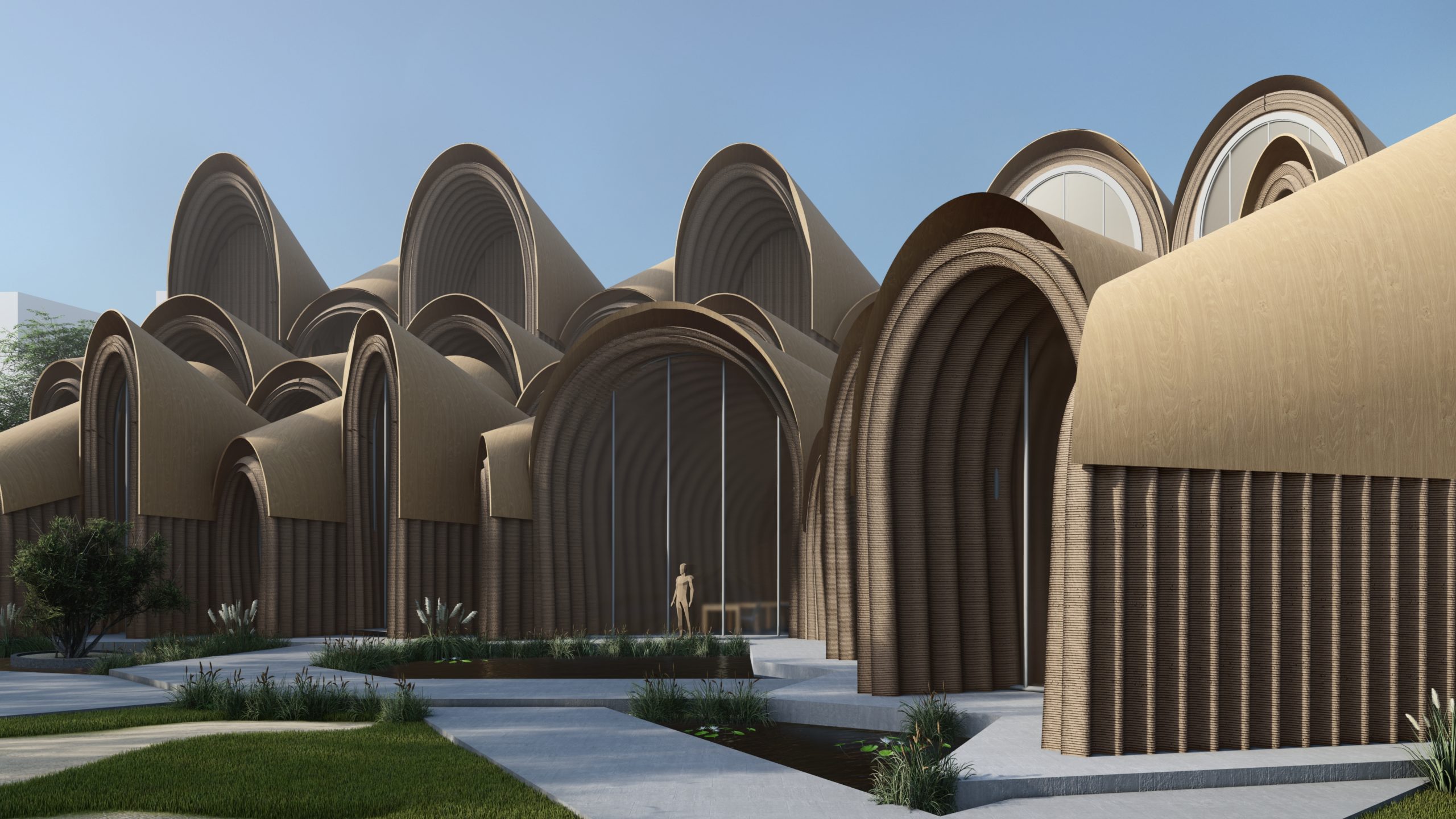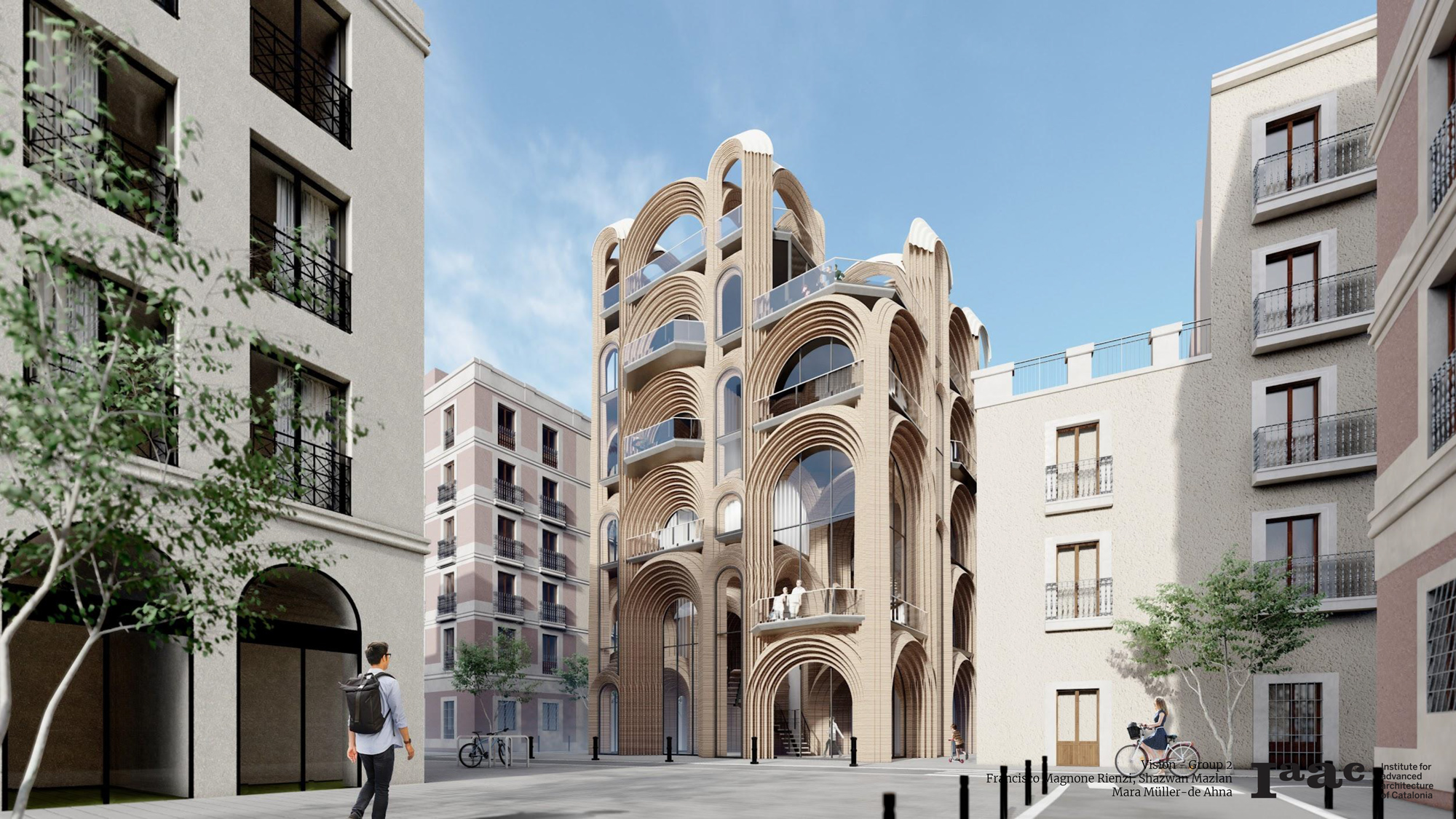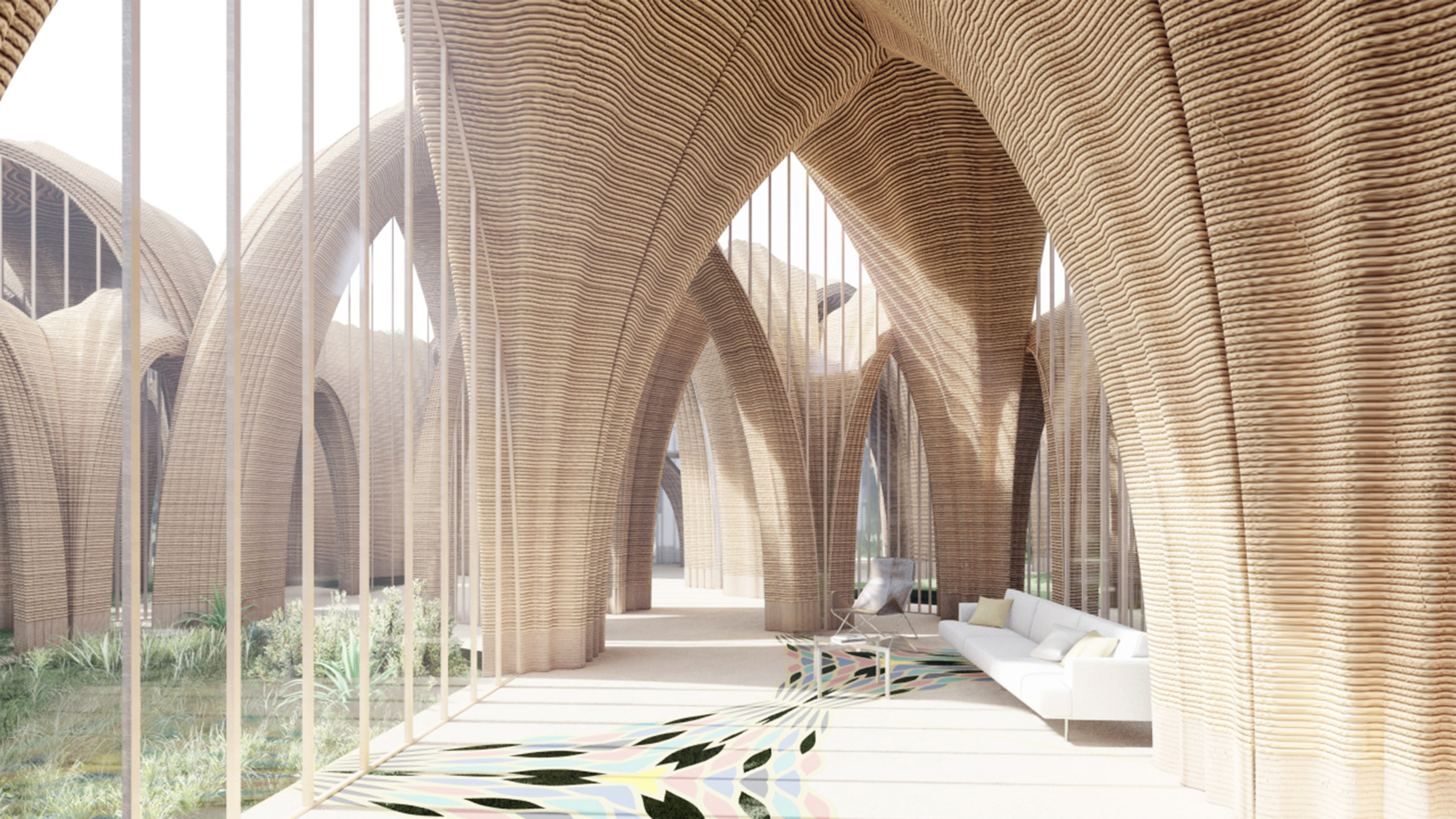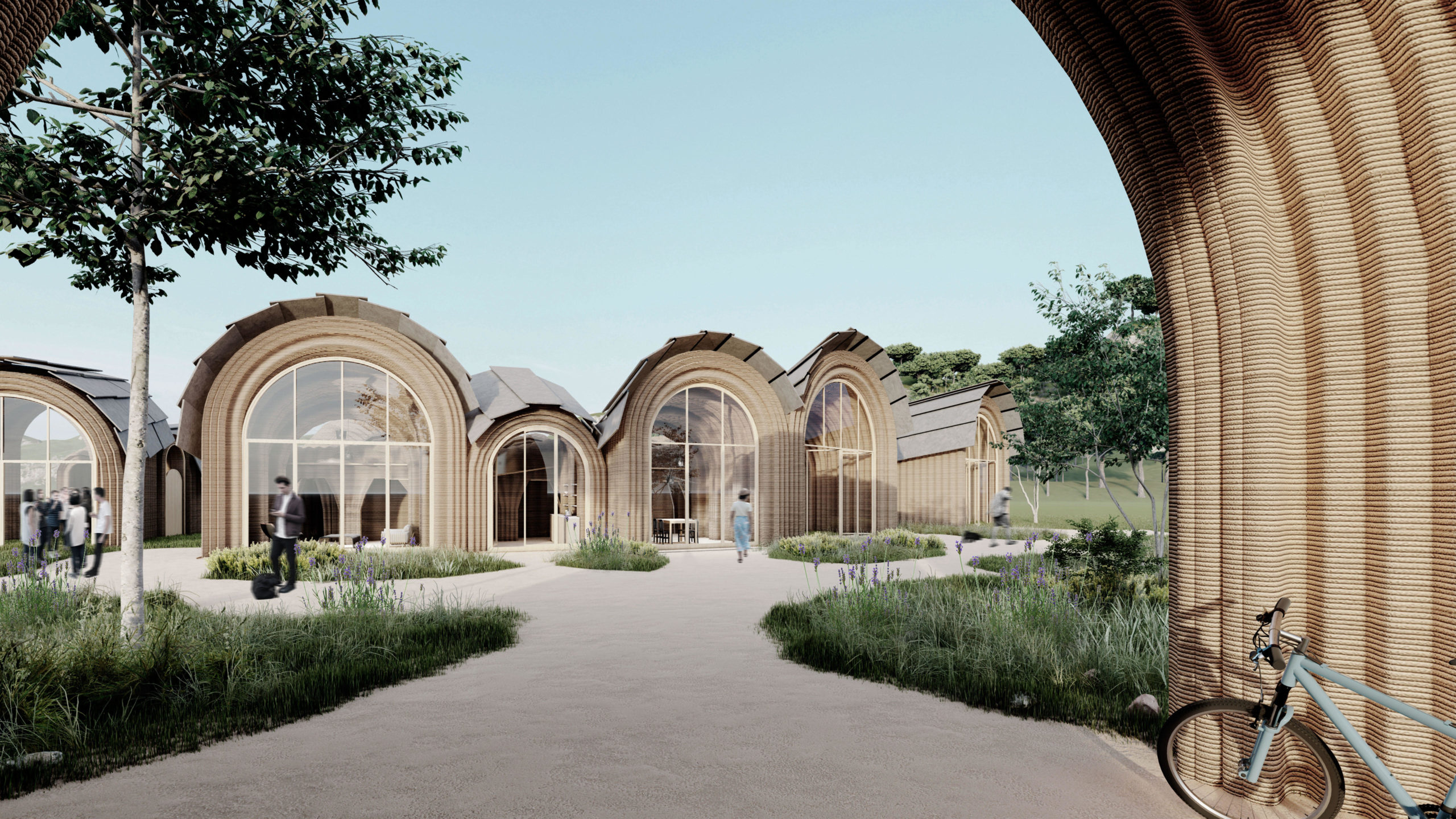Using the conclusion of the competition phase, design a student housing facility for a minimum of 20 and a maximum of 50 people for a site of your choice within the Metropolitan Area of Barcelona. The conclusion of this design phase will be presented as a series of 3 renderings (interior, exterior and construction) as well as a planar clipping plane animation from the bottom to the top of the architectural proposal.
This year’s Research focus on the Fifth Façade has led to the emergence of exciting construction techniques that enable to span between walls and achieve food slabs and roofs. The latest conclusions from the competition phase helped to develop these techniques into systems that are both structural and spatial. The vision, through the design of a building proposal, will focus on the relationship between structural and spatial organisations.
The methodology of the course, aligned to the one of previous assignments, will consist of a bottom up design process, in which we will explore design options under the form of catalogues. Our performance-based design approach will take us through small steps that will begin with the definition of a number of design intentions as a graphical map – the performance map – represented by arrows and areas within gridded spatial matrixes. Within these, we will then start to create single surface models, which will then be implemented with infill patterns and wall thicknesses, as well as the introduction of other materials or elements such as furniture. Our design projects will therefore emerge slowly throughout the weeks.
The level of detail of the proposal needs to permit you to create a clipping plane animation which features the infill patterns. The conclusion of your competition phase will be informative and instrumental for you to understand the amount of modelling that your projects will require.
You will not be asked to work physically on the development of the project, but rather digitally, with the aim to conclude with a series of 3 rendered images that feature different qualities: an image of the construction process, an image of the inhabited interior of the building and an image of the building from the outside, from a regular eye height perspective, and therefor with an emphasis on the proposal’s facade.
Despite working within groups of 3, the Vision Phase is a collective experiment in the sense that the 6 emerging proposals will illustrate, or demonstrate, the feasibility of the technique and the year’s strong technical developments. For this reason, we will encourage the group to work in a variety of contexts and specs: rural and urban, single-story and multi-story.
All proposals will nevertheless be based in the Barcelona Metropolitan area, and therefore in the same mediterranean climate zone, for which we will have an introduction with Gloria Font, our environmental consultant.
Learning Objectives
At course completion the student will:
- Develop a performance-based bottom up design process
- Design through a process of creation of design options
- Translate the conclusions of the competition phase into an operational structural system
- Explore the relationship between space and structural organisations
- Parametrise and model a 3d printed building solution
- Produce documents that enable an understanding of a physical building.













